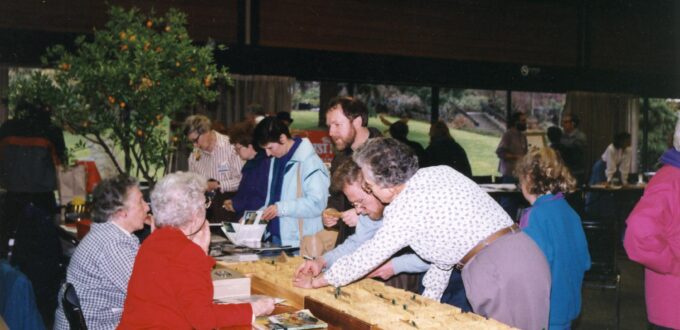Inspired by Pat Mooney’s book “Seeds of the Earth,” Sharon Rempel (Chief Interpreter, Special Events Coordinator and head gardener at The Grist Mill at Keremeos) realized that people had to become involved in keeping their ‘folk’ varieties alive. Corporations were buying up seed and regulations prohibiting saving and selling unregistered varieties were becoming more prevalent globally.
On February 14, 1990 the vision became a reality. Curator Roy Forster from the Van Dusen Botanical Gardens hosted Canada’s first Seedy Saturday. Over 500 people attended the event!
The first Seedy Saturday organizers included: Dan Jason from Salt Spring Seeds who sold and traded ‘open pollinated’ seeds; USC Canada’s Vancouver office person Mary Lindsay showing the ‘Seeds of Survival’ program; Catherine Gabriel from Health Action Network; and two living history sites including The Grist Mill at Keremeos. Heritage fruit groups like NAFEX and B.C. Fruit Testers and the University of British Columbia plant science department offered advice and technical help. Many small seed companies attended.
The Heart of Seedy Saturday was and is the Swap Table. It was a place for people to sit and chat, swap their seeds and tell the stories of best cultivation for the plant, the story of how they got the seed, how the variety got its name and also how to use the plant in cooking. Volunteers taught people how to label seed packets to ensure the integrity of the variety, including its name, would be conserved. Small seed company owners have adopted many of the varieties into their collections.
In the years that followed, Seedy Saturday and Seedy Sunday events began popping up, a slow but mighty movement. By 2009 there were 51 events from coast to coast.
Today, nearly 35 years later, more than 170 Seedy Saturday and Seedy Sunday events are held in communities across Canada. Find one near you on the Seeds of Diversity Events page and check back as winter approaches because it's filling up with new events daily!

